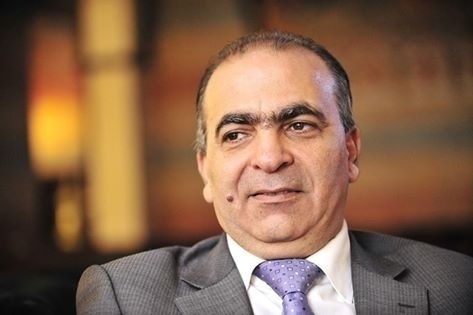After lingering for a long time, Turkey made up its mind and decided to intervene militarily in Syria, sending tanks inside the Syrian border and allowing a number of armed opposition to use Turkish territory to carry out its attacks on Jarablus and expel the Islamic State group from the city. This happened unexpectedly when ISIS forces suddenly vanished and opposition forces entered Jarablus within hours without notable losses.
But what are the justifications for the Turkish intervention and why now? The Turkish leadership has pursued a very cautious military policy toward Syria and has adhered to full coordination with the United States in arming the Syrian opposition and regulating the flow and type of weapons supplied to them. It has a sympathetic tone while addressing the Syrian people and the Syrian opposition, as it has permitted the Syrian opposition in various political and military formations to adopt Istanbul and Turkish border cities as centers for their institutions. However, and despite the strong statements from President Recep Tayyip Erdogan in support of the Syrian revolution for the last five years – such as Turkey’s promise not to allow another Hama massacre to take place in Syria, as well as stating Ankara would not stand idly by as the number Syrian refugees reached hundreds of thousands – it has not carried out any serious mobilization and it has not veered outside the sanctioned American plan until after the number of refugees reached six million and tragedies have occurred which have been far more painful and costly than the Hama massacre in many Syrian cities. Indeed, Turkey has remained adhering to the American conditions and restrictions which specify the amount and type of weapons which are permitted to cross over the Turkish border — and the timing of this crossing — to the Syrian opposition (which proves that the aim has not been to bring down Assad or make the revolution victorious, but prolong the war, regulate the balance of powers and make sure no side can win), despite the direct and public Russian and Iranian intervention to support the Assad mafia regime, when it was nearing collapse about a year before.
But what happened recently for the Turkish leadership to decide to send its tanks and soldiers inside Syrian territory and support some of the rebel groups to regain Jarablus from ISIS and confront the forces of the PYD extending in the area of the western Euphrates in northern Syria?
The biggest reason for the Turkish measure is likely the advance of the PYD forces — the Syrian wing of the Kurdistan Workers’ Party (PKK) — with the public support of the United States and their control of most of the Turkish-Syrian border, and the possibility of them succeeding in forming a Kurdish entity stretching to the sea along the length of this border, which could allow the PKK to obtain military bases on Syrian territory to ease their attacks against Turkish targets in the separatist war which it has been fighting for decades. This advance and the risks it bears are considered by Turkey to be a real red line, which the Turkish government cannot allow to be passed. This pushed the Turks to recalculate and work on studying the possibility of their military intervention in Syria to defend Turkey’s national interests and security, as it was subjected to a real threat — even if that meant rotating toward Russia and Israel, the two deadly rivals for Turkey and its policies in Syria. This is the decision Erdogan made before the failed coup attempt against his government and Washington’s reaction, which did not display a strong American stance in solidarity with Erdogan against the coup plotters and which constituted an additional factor that impacted heavily on the acceleration of the Turkish move.
This intervention came in coordination with the Russian and Iranians and after the agreement of the American administration which preferred to sacrifice its allies, the Kurds, against the possibility of losing Turkey, a strong ally in the region and a NATO member, and the commander of the second biggest army among its members — as well as with the tacit understanding of the regime through Iranian mediation.
This incursion will be exact and within the borders agreed between the Turks, Russians, Iranians, and Americans. It will not lead to more than guaranteeing the Turkish national interest at the expense of the PYD militias and Kurdish separatist ambitions in Syria. It will not stop the Syrian war and its aim will not be to topple the Assad regime and help secure the Syrian transition from tyranny to freedom. It will not remove Iran and its sectarian militias from our country. Accordingly, the Syrians’ mission of preserving their country and regaining their freedom and sovereignty — far away from the tyrants, oppressors and foreign occupiers — is still difficult and complex, and it requires a great deal of wisdom and political skill. It requires no longer betting on the good intentions of others in achieving aims and aspirations of the Syrian people.
Any move of any type undertaken by the active parties in Syria has the primary aim of serving the interests of those who took it, and the possibility of benefiting from this sort of move to serve Syria and the interests of its people demands independent decision-making and skill and the ability to trade interests with these parties. It has also become necessary to stop gambling on the good intentions of one government or another. In the political world there are interests, not good intentions. Everyone expects his move to produce results that serve his interests and not good works and deeds to be recorded in his page for his God on Judgement Day.
This article does not necessarily reflect the opinion of The Syrian Observer.


